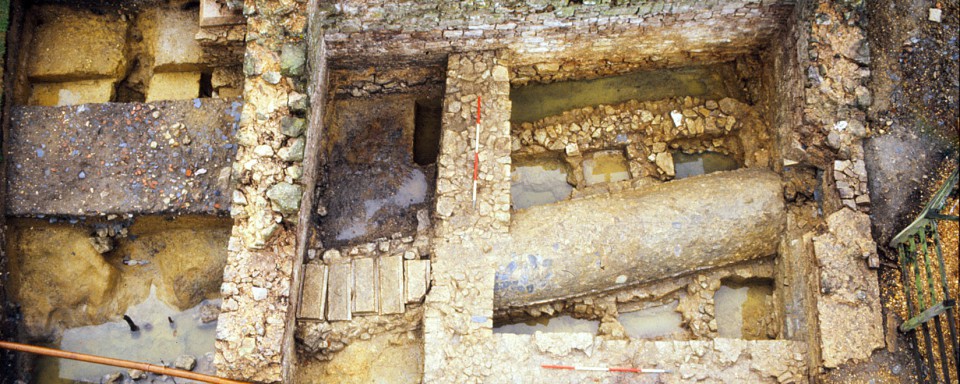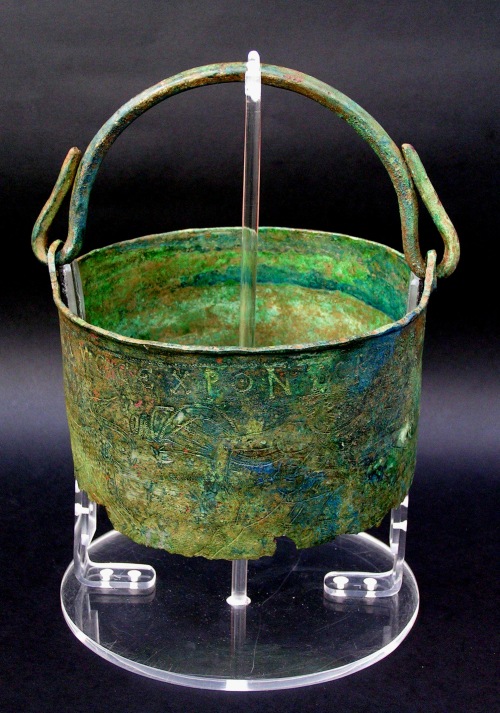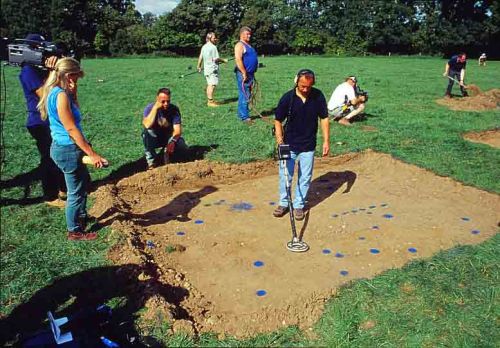In October 1999, metal detectorist Steve Bolger reported an unusual find to the Hampshire Finds Liaison Officer for the Portable Antiquities Scheme. Among the early medieval objects he had uncovered at Breamore was this rare copper alloy Byzantine bucket.
The body of the bucket was made from a single sheet of metal, hammered and then hand-decorated by stamping and incising with punches and a chisel. The resulting frieze, which runs around the bucket, depicts three naked warriors armed with spears, shields, swords and a discus, fighting a leopard and a mythical beast or bear. An inscription in ancient Greek around the top of the bucket reads ‘Use this, lady, for many happy years’. The bucket handle was threaded through two raised lugs with holes punched through them. The flat base of the bucket had become detached from the body.
This extraordinary bucket is one of only three known in England and belongs to a closely related group of which a further three were found in Turkey, Italy and Spain, with three more having unknown find spots. All of these buckets are decorated with a hunting frieze and most have an inscription. Their manufacture is so similar that it is thought that they were produced at the same workshop, or group of workshops, in the eastern Empire possibly at Antioch, in the 6th century AD.
The precise use of such buckets is not certain but several of the inscriptions refer to good health and suggest a personal domestic setting, probably related to bathing. The rarity of these buckets may be seen as an indicator of the high status of the owners. The other two examples from England come from Bromeswell, Suffolk, within 1 km of the Sutton Hoo cemetery and from Chessell Down on the Isle of Wight, where the bucket was part of a rich female grave excavated in the 19th century.
The responsible action of Steve Bolger in halting his detecting activity and reporting the find was recognised at the British Archaeological Awards in 2000 as it enabled proper archaeological investigation of the site to take place, funded by Hampshire County Council. An initial geophysical survey revealed a number of anomalies and led to a small-scale excavation, which revealed that the bucket was part of an important early Anglo-Saxon cemetery.
The site attracted the attention of Time Team and in August 2001 they broadcast a three-day ‘Time Team Live’ event from Breamore. They hoped to determine the extent of the cemetery and relate the Byzantine bucket to the broader picture of the burials. Surprisingly, a further six burials with buckets (though not Byzantine) were found and there were a higher than expected number of weapon burials.
David Hinton of the University of Southampton is working on the final publication of this nationally important, early Anglo-Saxon cemetery.

Replica made by Ray Walton for the Time Team programme. The bucket would originally have had a tinned surface, in imitation of silver examples.
The Breamore bucket can be seen at Rockbourne Roman Villa.
Further reading:
A2001.39 Archive held by Hampshire Cultural Trust
Mango, Mango, Evans & Hughes, A 6th century Mediterranean bucket from Bromeswell Parish, Suffolk, Antiquity 63, 1989, pp295-311
Series by Dave Allen, Sarah Gould, Lesley Johnson, Jane King, Peter Stone, with help from Stacie Elliot.







